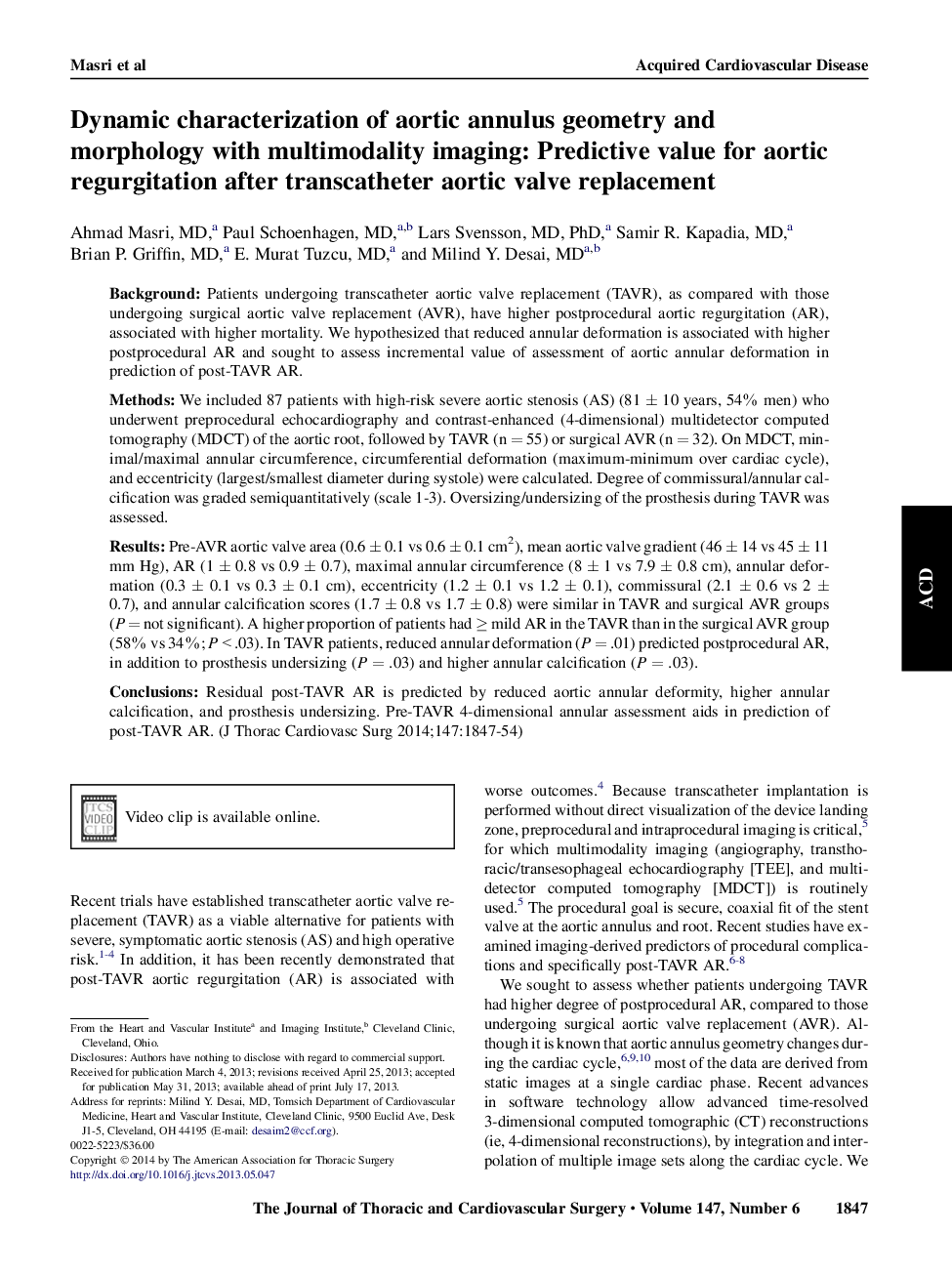| Article ID | Journal | Published Year | Pages | File Type |
|---|---|---|---|---|
| 2979650 | The Journal of Thoracic and Cardiovascular Surgery | 2014 | 8 Pages |
BackgroundPatients undergoing transcatheter aortic valve replacement (TAVR), as compared with those undergoing surgical aortic valve replacement (AVR), have higher postprocedural aortic regurgitation (AR), associated with higher mortality. We hypothesized that reduced annular deformation is associated with higher postprocedural AR and sought to assess incremental value of assessment of aortic annular deformation in prediction of post-TAVR AR.MethodsWe included 87 patients with high-risk severe aortic stenosis (AS) (81 ± 10 years, 54% men) who underwent preprocedural echocardiography and contrast-enhanced (4-dimensional) multidetector computed tomography (MDCT) of the aortic root, followed by TAVR (n = 55) or surgical AVR (n = 32). On MDCT, minimal/maximal annular circumference, circumferential deformation (maximum-minimum over cardiac cycle), and eccentricity (largest/smallest diameter during systole) were calculated. Degree of commissural/annular calcification was graded semiquantitatively (scale 1-3). Oversizing/undersizing of the prosthesis during TAVR was assessed.ResultsPre-AVR aortic valve area (0.6 ± 0.1 vs 0.6 ± 0.1 cm2), mean aortic valve gradient (46 ± 14 vs 45 ± 11 mm Hg), AR (1 ± 0.8 vs 0.9 ± 0.7), maximal annular circumference (8 ± 1 vs 7.9 ± 0.8 cm), annular deformation (0.3 ± 0.1 vs 0.3 ± 0.1 cm), eccentricity (1.2 ± 0.1 vs 1.2 ± 0.1), commissural (2.1 ± 0.6 vs 2 ± 0.7), and annular calcification scores (1.7 ± 0.8 vs 1.7 ± 0.8) were similar in TAVR and surgical AVR groups (P = not significant). A higher proportion of patients had ≥ mild AR in the TAVR than in the surgical AVR group (58% vs 34%; P < .03). In TAVR patients, reduced annular deformation (P = .01) predicted postprocedural AR, in addition to prosthesis undersizing (P = .03) and higher annular calcification (P = .03).ConclusionsResidual post-TAVR AR is predicted by reduced aortic annular deformity, higher annular calcification, and prosthesis undersizing. Pre-TAVR 4-dimensional annular assessment aids in prediction of post-TAVR AR.
